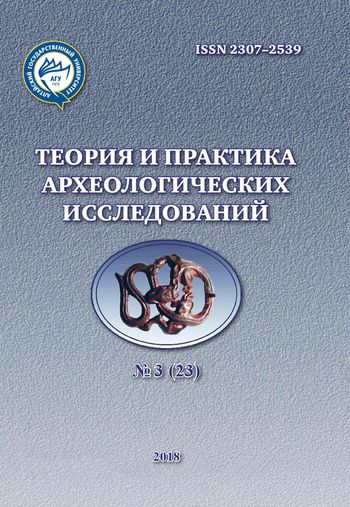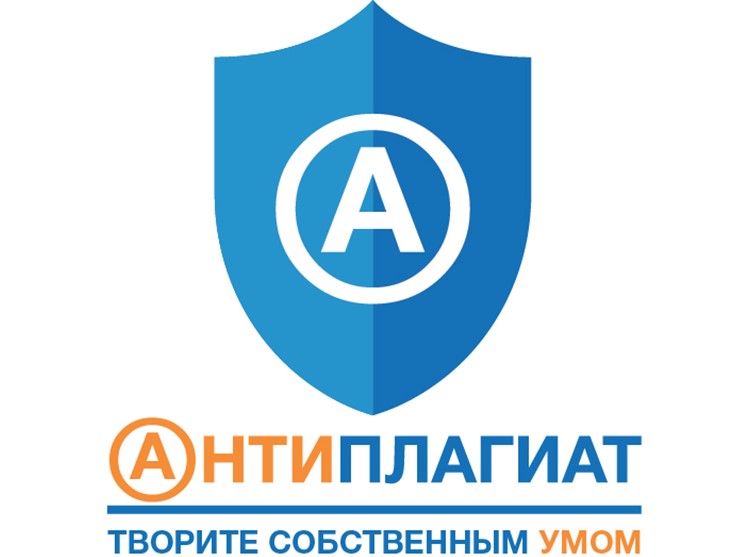STONE INVENTORY OF THE SUCHU SETTLEMENT (1975, excavation I, dwelling B)
Abstract
he article presents the analysis results of the stone industry of the Neolithic dwelling on the Lower Amur island of Suchu (excavation I, 1975). The collection of artifacts totals 2,082 copies. The raw material base of the stone inventory consists mainly of sedimentary (siltstones, argillites, sandstones), magmatic (effusive) and siliceous (flint, jasper, chalcedony, quartzite) rocks.
The technology of primary splitting in the stone industry of the dwelling is characterized mainly by end wedge-shaped and subprismatic, and also single-pencil-like nucleuses. In the gun kit, throwing (arrowheads, darts), cutting (knives, liner), sawing, chopping and combing tools, scrapers of various modifications, and also piercings were noted.
The fishing sinkers, the tops of the clubs, and the stone with the holes are represented by single specimens. Morphotypological and technical and technological analyses allow determining the probable cultural and chronological affiliation of the complex, primarily the Middle Neolithic Malyshevskaya and Late Neolithic ascension cultures, as evidenced by the main massifs of ceramics from the materials of the dwelling.
Downloads
Metrics
References
Derevyanko A.P., Markin S.V., Vasil’ev S.A. Paleolitovedenie: Vvedenie i osnovy [Paleolithology: Introduction and Basics]. Novosibirsk : Nauka, 1994. 288 p. [In Russian]. Деревянко А.П., Маркин С.В., Васильев С.А. Палеолитоведение: Введение и основы. Новосибирск: Наука, 1994. 288 с.
Medvedev V.E. Neoliticheskie kul’tury Nizhnego Priamur’ya [Neolithic Cultures of the Lower Amur Region]. Rossijskij Dal’nij Vostok v drevnosti i srednevekov’e: otkrytiya, problemy, gipotezy [Russian Far East in Antiquity and the Middle Ages: Discoveries, Problems, Hypotheses]. Vladivostok : Dal’nauka, 2005. Pp. 234–267 [In Russian]. Медведев В.Е. Неолитические культуры Нижнего Приамурья // Российский Дальний Восток в древности и средневековье: открытия, проблемы, гипотезы. Владивосток: Дальнаука, 2005. С. 234–267.
Medvedev V.E. Ob osobennostyah razvitiya srednego i pozdnego neolita na yuge Dal’nego Vostoka (Nizhnee Priamur’e) [On the Features of the Development of the Middle and Late Neolithic in the South of the Far East (Lower Amur Region)]. Trudy V (XXI) Vserossijskogo arheologicheskogo s”ezda v Barnaule – Belokurihe [Proceedings of the V (XXI) All-Russian Archaeological Congress in Barnaul-Belokurikha]. Barnaul : Izd-vo Alt. un-ta, 2017. Vol. I. Pp. 155–158 [In Russian]. Медведев В.Е. Об особенностях развития среднего и позднего неолита на юге Дальнего Востока (Нижнее Приамурье) // Труды V (XXI) всероссийского археологического съезда в Барнауле–Белокурихе. Барнаул: Изд-во Алт. ун-та, 2017. Т. I. С. 155–158.
Shevkomud I.Ya. Neolit – paleometall v Nizhnem Priamur’e – koncepciya paleoetnokul’turnogo razvitiya [Neolithic Paleometall in the Lower Amur Region – Concept of Paleoethnic Cultural Development]. Pervobytnaya arheologiya Dal’nego Vostoka Rossii i smezhnyh territorij Vostochnoj Azii: sovremennoe sostoyanie i perspektivy razvitiya : materialy region. nauch. konf. (Vladivostok, 18–20 noyabrya 2013 g.) [Primitive Archaeology of the Far East of Russia and Adjacent Territories of East Asia: Current State and Prospects of Development: Materials of the Regional Scientific Conference (Vladivostok, November 18–20, 2013)]. Vladivostok : IIAE DVO RAN, 2015. Pp. 140–177 [In Russian]. Шевкомуд И.Я. Неолит - палеометалл в Нижнем Приамурье - концепция палеоэтнокультурного развития // Первобытная археология Дальнего Востока России и смежных территорий Восточной Азии: современное состояние и перспективы развития: Мат-лы регион. науч. конференции (Владивосток, 18-20 ноября 2013 г.). Владивосток: ИИАЭ ДВО РАН, 2015. С. 140-177.
Shevkomud I.Ya., Yanshina O.V. Nachalo neolita v Priamur’e: osipovskaya kul’tura [The Beginning of the Neolithic in the Amur Region: the Osipovskaya Culture]. Pervonachal’noe osvoenie chelovekom kontinental’noj i ostrovnoj chasti Severo-Vostochnoj Azii : materialy Mezhdunar. simpoziuma (Yuzhno-Sahalinsk, 18–25 sentyabrya 2010 g.) [Initial Human Development of the Continental and Insular Parts of Northeast Asia: Materials of the International Symposium (Yuzhno-Sakhalinsk, September 18–25, 2010)]. Yuzhno-Sahalinsk : SahGU, 2010. Pp. 118–133 [In Russian]. Шевкомуд И.Я., Яншина О.В. Начало неолита в Приамурье: осиповская культура // Международный симпозиум «Первоначальное освоение человеком континентальной и островной части Северо-Восточной Азии» (Южно-Сахалинск, 18–25 сентября 2010 г.). Южно-Сахалинск: СахГУ, 2010. 118-133.
Shevkomud I.Ya., Yanshina O.V. Nachalo neolita v Priamur’e: poselenie Goncharka-I [The Beginning of the Neolithic in the Amur Region: the Goncharka-I Settlement]. SPb. : MAE RAN, 2012. 270 p. [In Russian]. Шевкомуд И.Я., Яншина О.В. Начало неолита в Приамурье: поселение Гончарка-I. СПб.: МАЭ РАН, 2012. 270 с.
Theory and Practice of Archaeological Research is a golden publisher, as we allow self-archiving, but most importantly we are fully transparent about your rights.
Authors may present and discuss their findings ahead of publication: at biological or scientific conferences, on preprint servers, in public databases, and in blogs, wikis, tweets, and other informal communication channels.
Theory and Practice of Archaeological Research allows authors to deposit manuscripts (currently under review or those for intended submission to ABS) in non-commercial, pre-print servers such as ArXiv.
Authors who publish with this journal agree to the following terms:
- Authors retain copyright and grant the journal right of first publication with the work simultaneously licensed under a Creative Commons Attribution License (CC BY 4.0) that allows others to share the work with an acknowledgement of the work's authorship and initial publication in this journal.
- Authors are able to enter into separate, additional contractual arrangements for the non-exclusive distribution of the journal's published version of the work (e.g., post it to an institutional repository or publish it in a book), with an acknowledgement of its initial publication in this journal.
- Authors are permitted and encouraged to post their work online (e.g., in institutional repositories or on their website) prior to and during the submission process, as it can lead to productive exchanges, as well as earlier and greater citation of published work (See The Effect of Open Access).








2.jpg)




